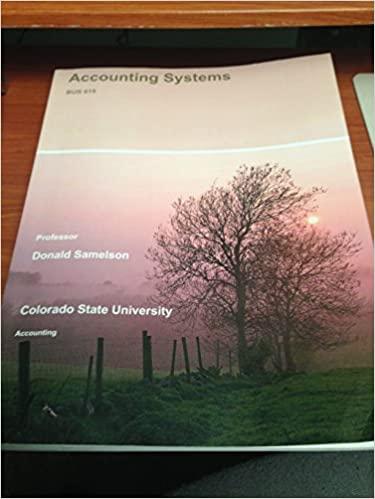Question
During the eight opening hours each day, it is estimated that there are 120 customers on average. There are two machine models that can process
During the eight opening hours each day, it is estimated that there are 120 customers on average. There are two machine models that can process the customer requests. The first one is an old model (called slow machine) that takes an average of 6 minutes to process a job. The second one is a new model (called fast machine) that takes an average of 3 minutes to process a job.
Option 1: use one fast machine. Option 2: use two slow machines.
The probability of the customers use the server are: option 1 (25%) option 2 (14.29%)
1. SCSS limited receives a lump sum payment from Filips each month for the services provided. But Filips keeps monitoring the service process by reviewing the system record and will deduct a certain amount of money depending on the service quality revealed by the service performance statistics.
Suppose that Filips imposes a penalty of $0.8 for every minute a customer waiting in the queue (not including the time when the customer is being served). The operating cost of each slow machine is $50 per hour; while that of a fast machine is $8X per hour, where X is the last numeric digit of your Student ID. (which is 5)
Compare the total (i.e., penalty+operating) costs per hour for SCSS to use these two options. Which option would you suggest SCSS to use? Why?
(Hint: to calculate the penalty cost, ask yourself: What is the average time a random customer needs to wait in the queue? How many customers arrive in one hour?)
2. Suppose SCSS adopts Option 1. In order to make most customers suffer less during waiting, the company wants to guarantee that there is at least 80% chance that an arriving customer gets service immediately or finds a waiting seat. In this case, how many waiting seats (not including the one for the customer being served) should SCSS provide in its waiting room?
(Hint: The probability that an arriving customer sees n customers already in the system equals to .)
Step by Step Solution
There are 3 Steps involved in it
Step: 1

Get Instant Access to Expert-Tailored Solutions
See step-by-step solutions with expert insights and AI powered tools for academic success
Step: 2

Step: 3

Ace Your Homework with AI
Get the answers you need in no time with our AI-driven, step-by-step assistance
Get Started


